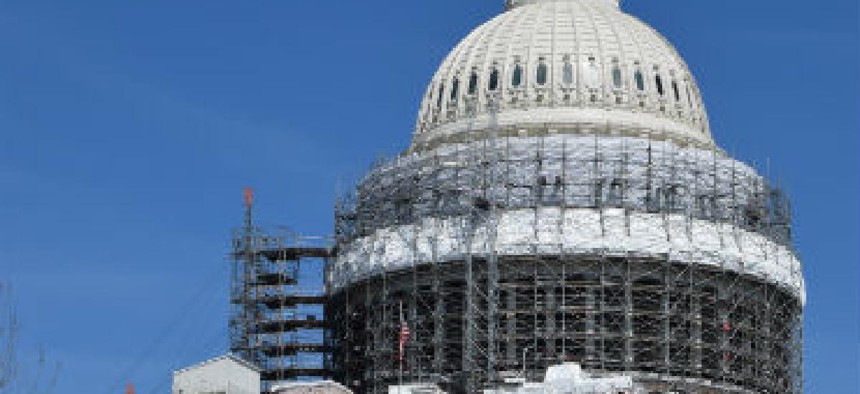What a December CR means for federal workers

Capitol Hill leaders plan to seek a temporary funding measure to keep the government open through Dec. 9, a move that will have consequences for the federal workforce.

Photo credit: Ritu Manoj Jethani / Shutterstock.com.
The clock is ticking on the government's operating status yet again. Congress has until the end of September to pass a slate of appropriations bills or a continuing resolution to avoid a government shutdown.
The good news for feds is that in a tough election season, with the White House and control of Congress on the line, there appears to be little appetite among incumbents of either party for a shutdown. A consensus seems to be emerging that would allow for a continuing resolution to fund the government through Dec. 9.
Senate Majority Leader Mitch McConnell (R-Ky.) said that he would like to see a Dec. 9 continuing resolution as early as next week. President Obama has invited Capitol Hill leaders for a meeting on Sept. 12 to discuss government funding and relatedly a stalled effort to provide funding to combat the Zika virus.
Sen. Harry Reid (D-Nev.), the minority leader, said that he wants a short-term funding measure, and noted in a floor speech on Sept. 6 that President Obama "will reject any continuing resolution that extends into 2017."
One potential roadblock to a short-term CR is the House Freedom Caucus. Speaking to reporters after a Sept. 9 closed-door meeting of Republican lawmakers, some conservative members expressed reluctance to go along with a three-month continuing resolution without some policy concessions. However, those reservations may not matter much; in the past, more moderate House Republicans have teamed up with Democrats to pass budget measures without the support of the far right wing of the GOP caucus.
But just because stopgap funding appears likely, it's not all good news for feds.
"It's all about perspective. Relative to a government shutdown, CRs are great," Doug Criscitello, Executive Director of MIT's Golub Center for Finance and Policy told FCW. "But from nearly all other views, they impede government's ability to operate efficiently. Agencies started planning for fiscal year 2017 well over a year ago, so all of the effort that went into developing a rational plan for administering programs and operating government to address current needs are thrown out the window in favor of a 'just do what you did last year' approach."
A short-term CR before a presidential election could be useful to the budget negotiators in other ways, though.
"The outcome of the election can help provide some degree of direction to congressional and White House budget negotiators," Criscitello said. He also added, "the incoming administration will need to quickly translate its policy priorities into the FY18 budget, which begins Oct. 1, 2017, so current officials would be doing the incoming folks a solid if they wrapped up the FY17 budget soon."
Though temporary funding measures have become standard operating procedure in recent years, multiple bills can impact the workforce.
"If a CR persists for more than a month or two, the funding uncertainty can have an adverse impact on federal agencies, the programs they administer, and the citizens they serve," Criscitello noted. "Late budgets mean inject substantial uncertainty into program and project planning and delivery. Spending is compressed into a shorter period of time, making contracts and grants much more inefficient."
NEXT STORY: Dawn Leaf retires as Labor CIO





